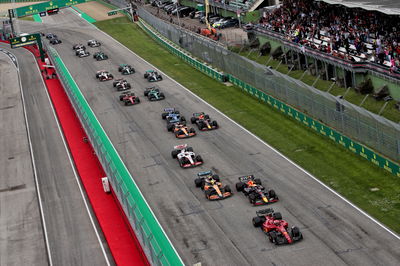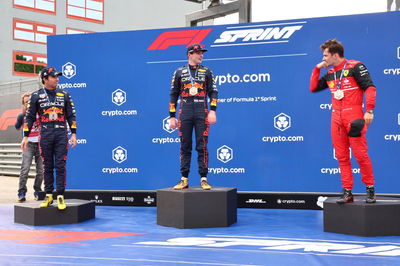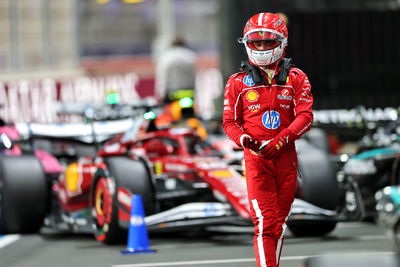F1 teams back plans to double sprint races for 2023, FIA hold up

After the format made its debut at three races last year, F1 originally planned to stage six sprint events this year but teams pushed back because they were demanding a greater budget cap allowance.
The first of three sprint events this season took place last weekend at Imola, with Red Bull’s Max Verstappen overtaking Ferrari driver Charles Leclerc to secure the first sprint win that featured an on-track pass for victory.
- How modest Russell is holding the early edge over Hamilton
- Leclerc’s Imola F1 mistake was ‘daft and unnecessary’ - Edwards
- Is Hamilton’s 2009 McLaren really his worst F1 car?
Two more events featuring the experimental format - which sees qualifying moved to Friday and the addition of a 100km race on Saturday - are planned for later this year in Austria and Brazil.
F1 managing director of motorsports Ross Brawn revealed after the Emilia Romagna Grand Prix sprint race that the world championship was planning for twice as many events in 2023.
The subject was one of the main topics discussed at a meeting of the F1 Commission in London on Tuesday, and all 10 teams unanimously agreed to increase the amount of sprint races from three to six.
However, F1 is awaiting final approval from the FIA for its plans to be formally ratified for 2023. It is believed that the hold up stems from the FIA seeking more money in return for its support.
“With the first of three Sprint events of the 2022 season popular with fans and stakeholders last weekend at the Emilia Romagna Grand Prix, Formula 1 and the teams were supportive of an extension to six Sprint events for the 2023 season, running with the same format as in 2022,” an FIA statement issued on Tuesday evening read.
“While supporting the principle of an increased number of Sprint events, the FIA is still evaluating the impact of this proposal on its trackside operations and personnel, and will provide its feedback to the Commission.”

What else was discussed in Tuesday’s meeting?
F1’s next generation of power unit regulations, which are due to be introduced from 2026, were also discussed.
While four main pillars had already been presented to the teams, the FIA set out a number of key targets relating to performance parameters, sustainability and financial regulations to the Commission.
The targets, which were well received by the Commission, are to:
- Significantly reduced drag to improve sustainability and efficiency and complement the Power Unit characteristics.
- Maintain and improve on recent lessons learned about close racing and cars being able to follow each other.
- Reduce car dimensions.
- Reduce or contain car mass.
- Sustainability: Continue path towards the standardisation or simplification of strategically-selected components for cost-cutting purposes. Expand the usage of sustainable materials or technologies and focus on recyclability.
- Continued innovation in terms of car safety, moving towards active and connected safety systems.
An update to the 2023 technical regulations will see the use of helmet cameras mandated for all drivers from next season onwards, following successful recent trials.
Another confirmed change will see F1 trial a reduction in the tyre allocation from 13 sets to 11 at two events in 2023 in order to evaluate the impact on track running “with the overall intention to move to more sustainable use of tyres in the future”.
It is understood that other main topics included inflation pressures and freight costs relating to the cost cap and a discussion around potential alleviation.
F1, the FIA and the teams are also still working through plans to replace the Russian Grand Prix, which had its contract terminated in the wake of Russia’s invasion of Ukraine.
It is believed that Qatar, or a second race in Singapore, are among the options F1 is evaluating to fill the September 25 slot, though no final decision has been taken.












